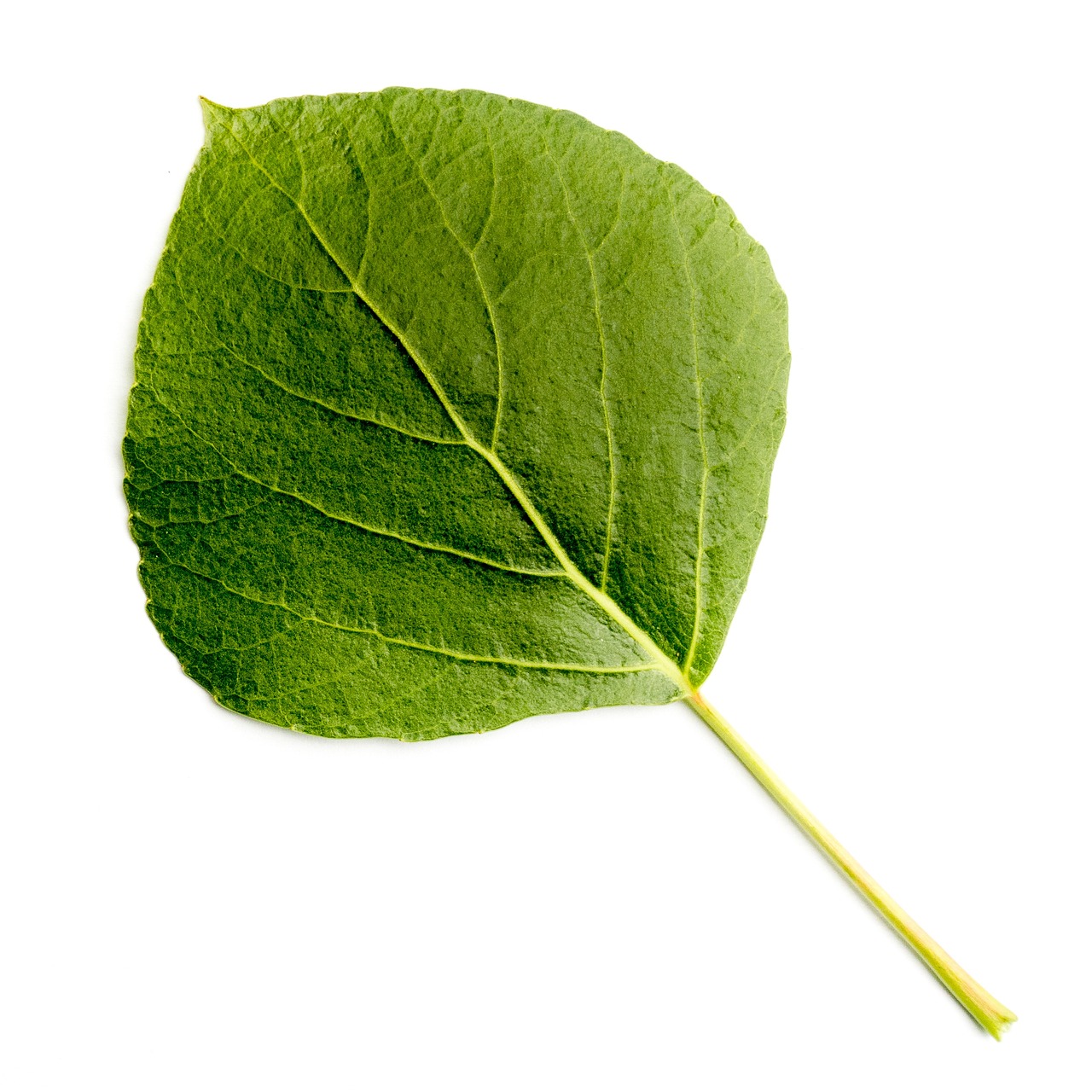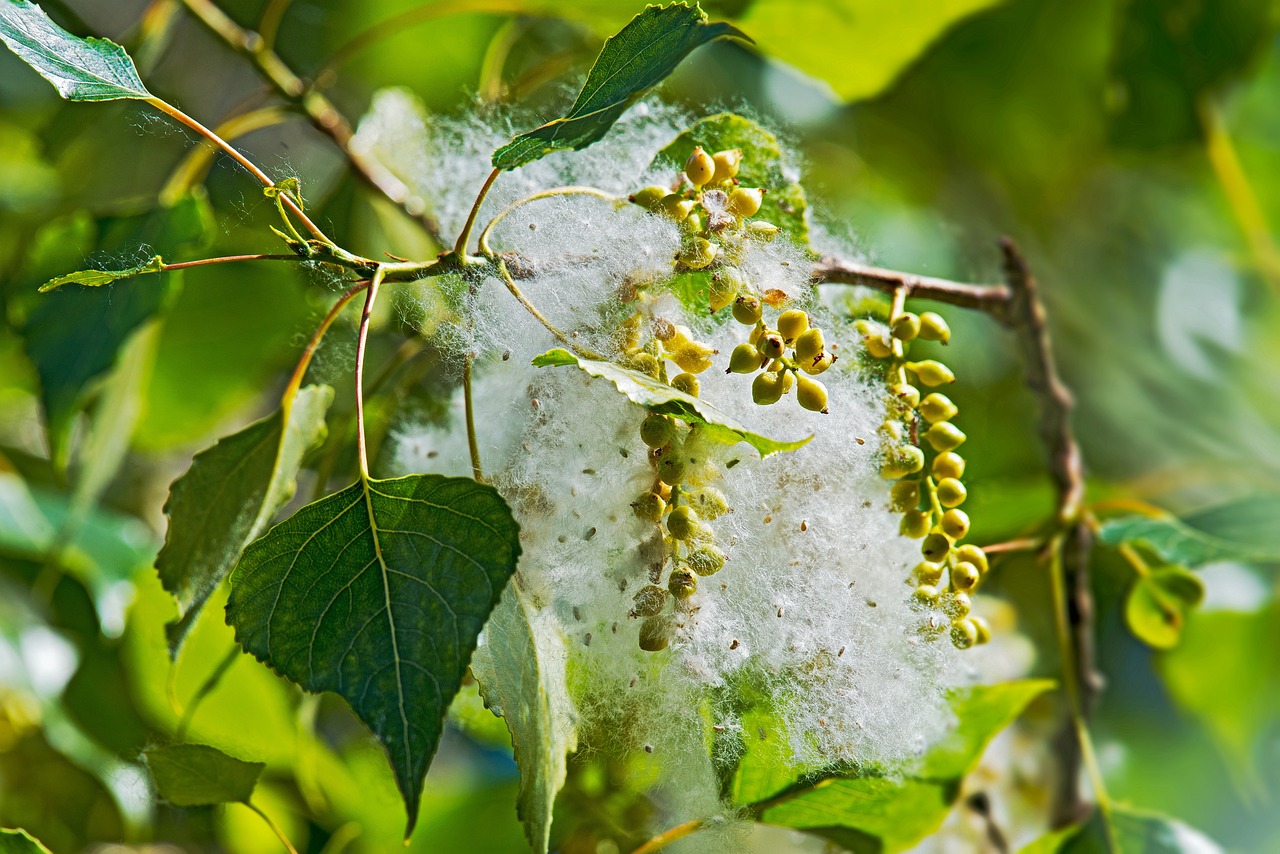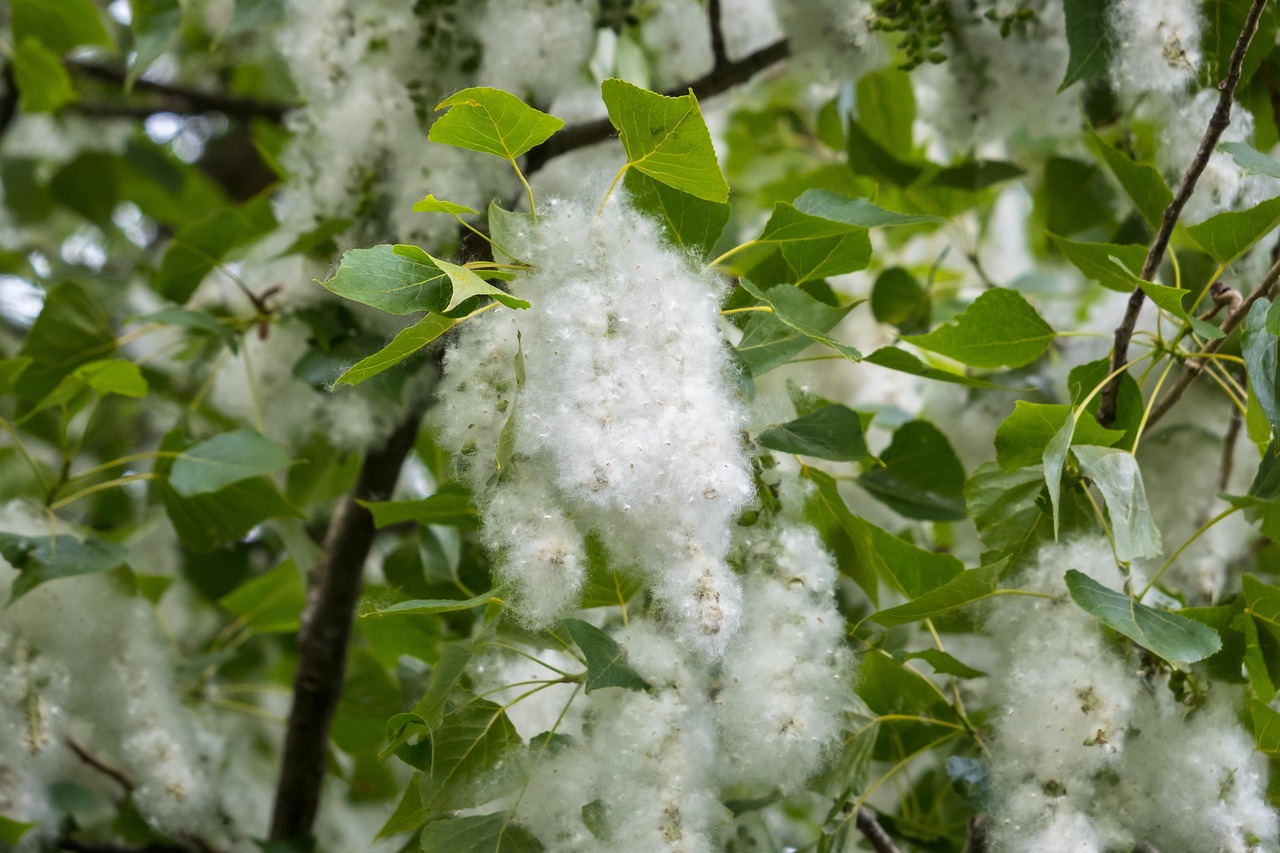Poplar trees are known for their rapid growth rate, often reaching heights of 5 to 8 feet per year under optimal conditions. This makes them an ideal choice for creating effective windbreaks quickly.
Understanding Poplar Trees
Poplar trees belong to the genus Populus and are part of the Salicaceae family. They are commonly found in various regions around the world, particularly in North America, Europe, and Asia. Known for their tall, straight trunks and broad canopies, poplars are often used in landscaping, timber production, and as windbreaks.

One of the key reasons for the popularity of poplar trees is their rapid growth rate. This characteristic enables them to provide immediate benefits, such as shielding farmland from wind and reducing soil erosion. The fast growth also allows for quicker harvesting compared to slower-growing tree species.
Growth Rate Factors
The growth rate of poplar trees can be influenced by several factors, including:
- Soil Quality: Poplars thrive in well-drained, fertile soils rich in organic matter.
- Water Availability: Adequate moisture is crucial for their growth. They prefer areas with consistent water supply.
- Sunlight: Full sun exposure is essential for optimal growth. Poplars need at least six hours of direct sunlight daily.
- Species Variation: Different species of poplar may exhibit varying growth rates. For instance, the Eastern Cottonwood (Populus deltoides) is known for its exceptionally fast growth.
Ideal Conditions for Planting
To maximize the growth rate of poplar trees in windbreak plantings, it’s important to consider the best planting conditions. Here are some recommendations:

- Select a site with full sun exposure.
- Prepare the soil by testing pH levels and incorporating organic material if necessary.
- Ensure that the planting area has good drainage to prevent root rot.
- Space trees appropriately to allow for their mature size and proper airflow.
Growth Rate Overview
The following table provides a general overview of the growth rates for various species of poplar trees:
| Species | Average Height (Feet) Per Year | Optimal Growing Conditions |
|---|---|---|
| Eastern Cottonwood | 5 – 8 | Fertile soil, adequate moisture |
| Lombardy Poplar | 3 – 5 | Well-drained soil, full sun |
| Balm of Gilead | 4 – 6 | Moist soil, full sun |
| Black Poplar | 3 – 5 | Rich soil, near water sources |
The rapid growth of poplar trees makes them a practical choice for those looking to establish windbreaks quickly. However, understanding the specific requirements for each species is crucial to achieving optimal results. By providing the right conditions, landowners can enjoy the benefits of these trees in a relatively short time frame.
In addition to their rapid growth, poplars are also valued for their adaptability. They can thrive in various climates and soil types, making them suitable for a range of geographical locations. This adaptability contributes to their effectiveness as windbreaks, as they can be planted in diverse environments while still providing shelter from harsh winds.

The environmental benefits of planting poplar trees extend beyond just wind protection. Their dense foliage can trap dust and pollutants from the air. Additionally, they help to improve soil quality by adding organic matter through leaf litter and root decay. As a result, poplars serve both functional and ecological purposes in agricultural and residential settings.
Overall, understanding the growth rate and ideal conditions for poplar trees is essential for anyone considering them for rapid windbreak planting. With the right care and attention, these trees can flourish and provide valuable benefits in a relatively short amount of time.
Choosing the Right Poplar Species
Selecting the appropriate species of poplar tree is crucial for achieving the best growth rate and overall success in planting windbreaks. Different species have unique characteristics that make them suitable for varying conditions. Here are some popular species used in windbreaks:

- Eastern Cottonwood (Populus deltoides): Known for its rapid growth, this species can reach heights of 50 to 100 feet. It thrives in moist, fertile soils and is often found near rivers and streams.
- Lombardy Poplar (Populus nigra ‘Italica’): This fast-growing tree is characterized by its tall, narrow shape. It can grow up to 60 feet high and is well-suited for urban environments.
- Balm of Gilead (Populus candicans): This species grows quickly and can reach heights of 50 to 80 feet. It prefers moist conditions and is often planted in areas with ample water supply.
- Black Poplar (Populus nigra): This species is adaptable to various soil types and can reach heights of 60 to 100 feet. It is commonly found in riparian zones and other wet environments.
Planting Techniques for Optimal Growth
To ensure that poplar trees grow efficiently and effectively, proper planting techniques must be followed. The following steps outline the best practices for planting poplar trees:
- Site Preparation: Clear the planting area of weeds, grass, and debris. Test the soil pH and amend it if necessary.
- Choosing the Right Time: The best time to plant poplars is during the early spring or fall when temperatures are mild.
- Spacing: Space trees 10 to 20 feet apart depending on the species. This allows for adequate sunlight and air circulation.
- Planting Depth: Dig holes deep enough to accommodate the root ball without bending the roots. Ensure that the root collar is level with the soil surface.
- Watering: Water immediately after planting to settle the soil around the roots. Continue to water regularly, especially during dry spells.
Maintenance for Healthy Growth
After planting, ongoing maintenance is essential to promote healthy growth and ensure the success of your windbreak. Consider the following maintenance practices:
- Watering: Young poplar trees require consistent moisture. Water deeply but infrequently to encourage deep root growth.
- Mulching: Apply a layer of mulch around the base of the trees to retain moisture and suppress weeds.
- Pest Management: Monitor for common pests such as aphids and caterpillars. Use organic pesticides if necessary to protect the trees.
- Pruning: Prune dead or damaged branches to promote airflow and reduce disease risk. Conduct pruning during dormant seasons.
Environmental Impact of Poplar Trees
The environmental benefits of planting poplar trees extend beyond their role as windbreaks. Here are some notable advantages:
- Carbon Sequestration: Poplars absorb carbon dioxide from the atmosphere, helping to mitigate climate change.
- Biodiversity Enhancement: Poplar trees provide habitat for various wildlife species, contributing to ecological diversity in planted areas.
- Soil Stabilization: The extensive root systems of poplars help prevent soil erosion, particularly in areas prone to flooding or heavy rainfall.
- Water Filtration: As riparian plants, poplars can filter pollutants from water systems, improving water quality in nearby rivers and lakes.
Challenges in Growing Poplar Trees
While poplar trees offer many benefits, they also come with challenges that need to be addressed. Some common issues include:
- Disease Susceptibility: Poplars can be prone to diseases such as leaf rust and cankers. Regular monitoring is essential.
- Pest Infestations: Insects like borers and aphids may impact tree health. Early detection and intervention are key.
- Soil Requirements: Poplars may struggle in poor or compacted soils. Amending the soil before planting can mitigate this issue.
- Water Dependency: While poplars thrive in moist conditions, they can suffer in drought situations. Providing adequate irrigation is vital.
By understanding these challenges and implementing effective management strategies, landowners can successfully cultivate poplar trees for rapid windbreak planting while maximizing their benefits for the environment and surrounding ecosystems.
Companion Planting with Poplar Trees
Companion planting can enhance the growth and health of poplar trees, as well as improve the overall ecosystem of the planting area. By pairing poplars with compatible plants, landowners can create a more balanced environment that encourages biodiversity and reduces pest pressures.
Benefits of Companion Planting
Companion planting with poplar trees offers several advantages:
- Pest Control: Certain plants can repel pests that are harmful to poplar trees, reducing the need for chemical pesticides.
- Soil Improvement: Some companion plants can fix nitrogen in the soil, enhancing fertility and promoting healthy root systems.
- Biodiversity Boost: A diverse planting scheme can attract beneficial insects and pollinators that support overall ecosystem health.
- Microclimate Creation: Companion plants can help maintain soil moisture and protect young trees from extreme weather conditions.
Recommended Companion Plants
When selecting companion plants for poplar trees, consider these options:
- Legumes: Plants such as clover and beans can enhance soil nitrogen levels, benefiting nearby poplars.
- Herbs: Plants like basil and mint can deter pests while providing aromatic foliage that attracts beneficial insects.
- Flowers: Marigolds and nasturtiums can attract pollinators and repel harmful insects.
- Ground Covers: Low-growing plants like creeping thyme can help suppress weeds and retain soil moisture.
The Role of Poplar Trees in Agroforestry
Poplar trees play a significant role in agroforestry systems, which combine agriculture and forestry practices for mutual benefits. Integrating poplars into agricultural landscapes can enhance productivity and sustainability.
Advantages of Agroforestry with Poplars
The incorporation of poplar trees in agroforestry systems provides several benefits:
- Increased Biodiversity: Poplar trees create habitats for various species, encouraging a diverse ecosystem that supports crop health.
- Improved Soil Quality: The organic matter from fallen leaves and decaying roots enriches the soil, promoting healthier crops.
- Wind Protection: Poplars serve as windbreaks, reducing wind speed and protecting crops from damage.
- Water Management: Poplars can help regulate water flow in agricultural fields, reducing erosion and improving water availability for crops.
Economic Benefits of Poplar Planting
The economic advantages of planting poplar trees for windbreaks and agroforestry can be substantial. Here are some key economic benefits:
| Benefit | Description |
|---|---|
| Timber Production | Poplar wood is valuable for its fast growth and versatility in products like furniture, paper, and plywood. |
| Crop Yield Increase | Windbreaks reduce crop damage from wind, leading to higher yields and more profitable harvests. |
| Erosion Control | Sustainable land management practices reduce soil loss, leading to lower costs in soil amendments over time. |
| Carbon Credits | Landowners may qualify for carbon credits by planting trees that sequester carbon, creating a potential income stream. |
The economic implications of integrating poplar trees into agricultural systems highlight the multifaceted benefits they provide. These advantages not only support individual landowners but also contribute to broader environmental goals.
Case Studies on Successful Poplar Windbreaks
Examining successful case studies can provide valuable insights into effective practices for planting and managing poplar windbreaks. Here are a few examples:
Case Study 1: Midwest Farming Region
A group of farmers in the Midwest implemented poplar windbreaks on their properties to combat wind erosion. By planting rows of Eastern Cottonwood along their fields, they noted a significant reduction in soil loss during storms. The windbreaks also improved crop yields by protecting young plants from harsh winds.
Case Study 2: Urban Landscape Enhancement
An urban development project incorporated Lombardy Poplars as part of its landscaping plan. The tall trees not only provided shade but also improved air quality by trapping dust and pollutants. Residents reported a noticeable enhancement in their living environment due to the aesthetic and ecological benefits of the trees.
Case Study 3: Riparian Restoration
A government initiative focused on restoring riparian zones included planting Black Poplars along riverbanks. These trees stabilized the soil, improved water quality, and provided habitat for wildlife. The project demonstrated how strategic planting can benefit both the environment and local communities.
These case studies illustrate the diverse applications of poplar trees in windbreak planting and their positive impacts on agriculture, urban environments, and ecological restoration efforts.
Future Trends in Poplar Tree Planting
As environmental concerns grow, the role of poplar trees in sustainable practices is becoming increasingly important. Here are some future trends that may influence poplar tree planting for windbreaks and other applications:
- Climate Resilience: Research is ongoing to breed poplar varieties that are more resilient to climate change. This could include enhanced drought resistance and improved adaptability to shifting weather patterns.
- Agroforestry Integration: The integration of poplars in agroforestry systems is likely to become more common. This approach maximizes land use efficiency and enhances ecosystem services while providing economic benefits.
- Carbon Sequestration Initiatives: As carbon trading markets expand, landowners may increasingly plant poplars to take advantage of carbon credits. This could provide a new revenue stream while contributing to climate mitigation efforts.
- Urban Forestry Projects: The demand for urban green spaces is on the rise. Poplars, with their fast growth and ability to improve air quality, may play a significant role in urban forestry initiatives.
Best Practices for Future Planting
To ensure the ongoing success of poplar tree planting, the following best practices should be considered:
- Research Local Conditions: Before planting, conduct thorough research on local soil types, climate conditions, and potential pests. Tailoring planting strategies to specific environments will yield better results.
- Engage with Experts: Consulting with local agricultural extension services or forestry experts can provide valuable insights into best practices for planting and maintaining poplar trees.
- Monitor Growth Regularly: Keeping track of the growth rates and health of your poplar trees will help identify any issues early on. This proactive approach can prevent larger problems down the road.
- Community Involvement: Engaging local communities in planting initiatives can foster a sense of ownership and stewardship. Educational programs about the benefits of poplars can also improve community support.
Final Thoughts
The utilization of poplar trees for rapid windbreak planting presents an opportunity for landowners, urban planners, and environmentalists alike. Their remarkable growth rate, adaptability to various conditions, and environmental benefits make them a strategic choice for improving both agricultural productivity and ecological health. From enhancing soil quality to providing habitats for wildlife, the advantages of integrating poplar trees into landscapes are substantial.
The case studies highlighted demonstrate the versatility of poplar trees in different contexts, showcasing their potential in agriculture, urban settings, and ecological restoration. With ongoing research and development focused on improving poplar varieties, as well as increasing awareness of their benefits, the future looks promising for the continued use of these trees in sustainable practices.
As we move forward, it is essential to adopt best practices and engage with communities to maximize the positive impact of poplar tree planting. By fostering collaboration among stakeholders and embracing innovative approaches, we can leverage the unique qualities of poplar trees to create healthier ecosystems and more productive agricultural landscapes.
The journey towards sustainable land management through poplar tree planting is not just about immediate gains; it is also about creating a legacy of environmental stewardship for future generations.
